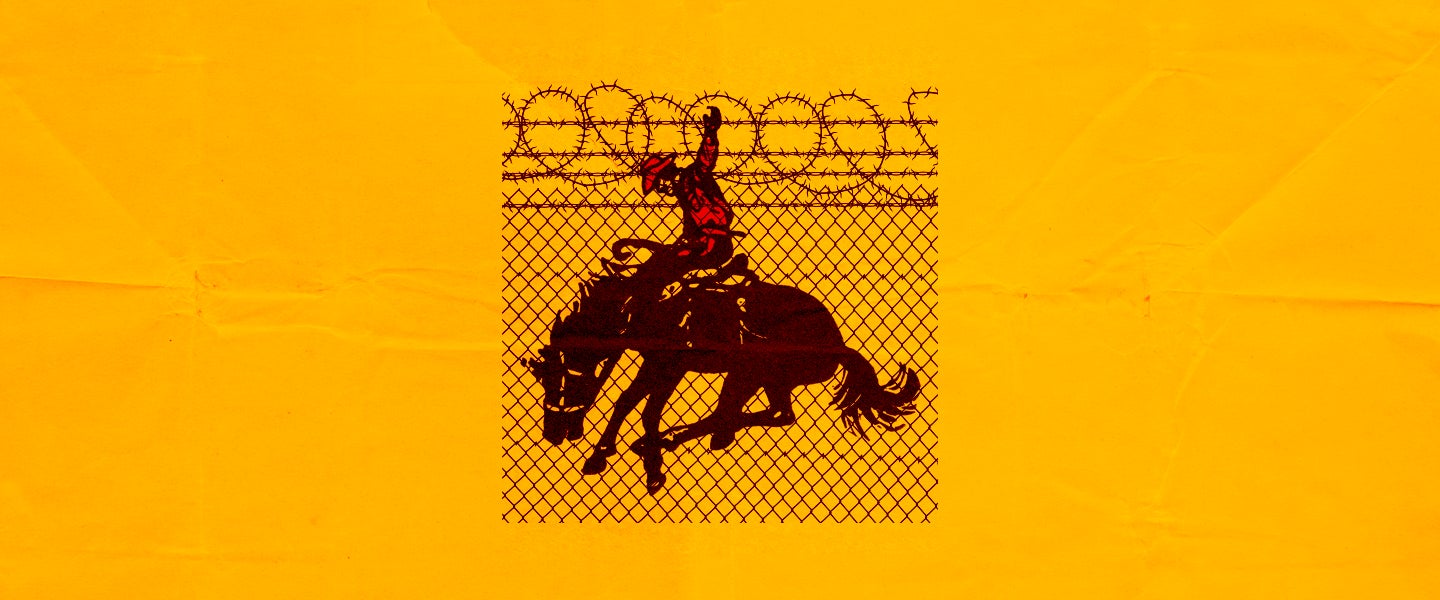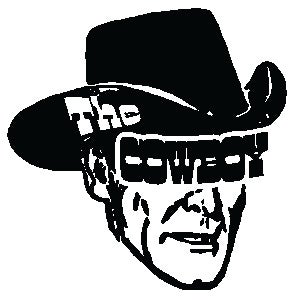 It’s high noon at the Northern Nevada Correctional Center, a minimum-security prison in the state’s capital of Carson City. The barbed wire is gleaming, the guards are polishing their weapons and inmate Dale Jones is standing on a horse named Conan the Barbarian. Wearing a pair of prison-issue cowboy boots and a rider’s helmet that does little to contain the tattoos pouring out of his denim-blue work shirt onto his face and neck, he wavers in his pose, legs quivering atop the weathered patina of his Western saddle as he tries not to fall.
It’s high noon at the Northern Nevada Correctional Center, a minimum-security prison in the state’s capital of Carson City. The barbed wire is gleaming, the guards are polishing their weapons and inmate Dale Jones is standing on a horse named Conan the Barbarian. Wearing a pair of prison-issue cowboy boots and a rider’s helmet that does little to contain the tattoos pouring out of his denim-blue work shirt onto his face and neck, he wavers in his pose, legs quivering atop the weathered patina of his Western saddle as he tries not to fall.
His eyes are glued to the ground for balance, but were they to raise, he’d have an enviable view of something most inmates would never even dream of seeing during their incarceration: a sprawling ranch at the base of the Sierra Nevadas where more than 800 wild mustangs are housed and trained by the prisoners themselves. Were the nearby prison not immediately visible in the foreground, it would be easy to imagine, from the elevated vantage point of the ranch’s tallest horse, that he was free; that there was nothing — least of all a six-year sentence for armed robbery — standing between him and the golden hills crescendoing into jagged peaks before him.
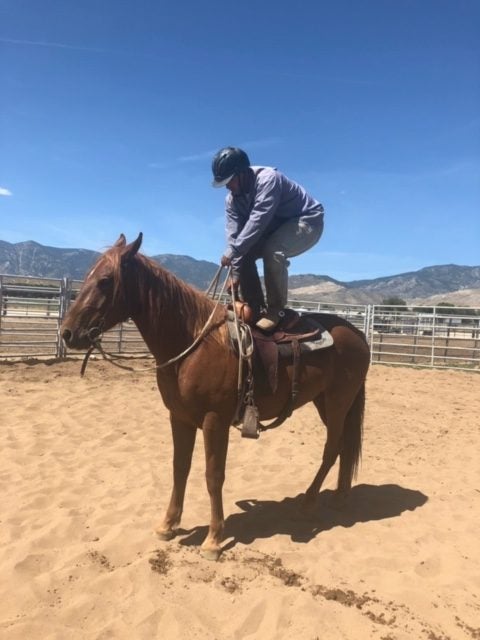
This is Silver State Industries Ranch, the NNCC’s on-premise facility where one of the country’s only wild horse inmate training programs takes place. A joint effort between the Bureau of Land Management (BLM) and the Nevada Department of Corrections to curb a wild mustang population that’s exploded to over three times what the bureau considers sustainable, the program trains inmates to “break” horses so they can be auctioned off to ranchers, recreational riders, Border Patrol and police departments country-wide. It is, in fact, one of the only animal conservation programs in history that uses domestication, not extermination, to address the overpopulation of a wild species.
The balancing act Jones and Conan are practicing in front of me isn’t part of the domestication process, though. That’s just extra credit. It’s not every horse who’d concede to playing Equine Elevator, but Conan the Barbarian is up to the task. Plucked from the wild by BLM just a few weeks earlier, the towering chestnut mustang now stands figurine-still, ears pointed backs toward Jones to survey where he’s at like a concerned parent watching out for their wacked-out kid on the playground. Like the other 60 to 80 mustangs the inmates gentle on the ranch each year, Conan had never seen a human — let alone allow one to stand on his back — but after just a month of training with Jones, he’s a regular trick pony.
“Don’t mind him, he’s just showing off,” program director Hank Curry tells me as he joins me outside the ring where Jones, satiated by his victory over gravity, has started to trot Conan around. “He thinks he’s a real hot-shot.”
At 69, Curry is a pure, unfiltered cowboy. Wrangler-clad, rosy-cheeked and donning a pristine, cream-colored cowboy hat that seems to be the only item on the property resistant to dust, he speaks with a slow, authoritative drawl that compliments the near-militaristic, 24/7 training regimen he’s designed for both the mustangs and the inmates. “Horses aren’t the only ones learning something here,” he says, the deep lines around his eyes crinkling to reveal that he’s not above a little humor. “In a way, we’re training people, too.”
While the program was never intended to function like equine therapy, working with wild mustangs tends to have a rehabilitative effect on the inmates who train them. “These guys like to think they’re real tough, but this work softens them a little,” says Curry, gesturing at a group of inmates taking turns galloping their horses down the length of a large, fenced arena. “They become warmer, more mellow. They learn to respect authority and follow the rules. They mature and learn to take better care of themselves and their families. Their walls come down.”
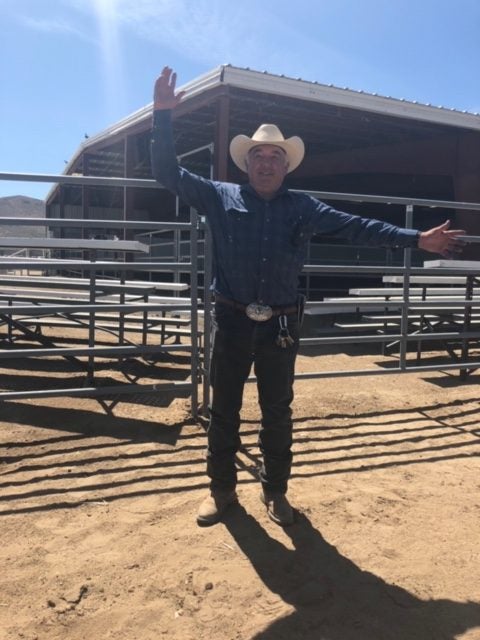
Mark, a sunburnt, blue-eyed inmate with a comparable amount of ink to Jones, tells me it has everything to do with the bond that develops between man and mustang. “When I first joined the program, I was shocked at how much you can connect with these animals,” he says from atop Tahoe, the lavender-gray mustang he’s riding. “When I’m riding, my thoughts become his thoughts. If I’m tense or my blood pressure goes up, he feels that. When I relax and I’m calm, he feels that, too. We have this really awesome bond that’s just hard to explain.”
Once formed, that bond can shift an inmate’s self-image. After a few weeks of caring for a vulnerable animal whose well-being depends on their hard work, ranch manager Justin Pope says the inmates start to see themselves not as criminals, but as caretakers.
A study by the Ohio Department of Rehabilitation and Corrections confirms: working with horses in this manner encourages patience, understanding and the ability to bond, three qualities many criminal minds tend to lack or suppress. A separate study published in Frontiers in Psychology found that caring for animals facilitates empathy, a sense of responsibility and helps to reduce the effects of trauma. Perhaps it’s no surprise, then, that an internal study from the Nevada Department of Corrections found that graduates of Curry’s program have been found to reoffend roughly 50 percent less than the general prison population after their release.
For career criminals like Jones, this can break the cycle of endless incarceration many of them see as their only future. “I was wild once, just like him,” he tells me, patting the ever-patient Conan who, despite my fascination with him, is bored to death by my presence. “I didn’t live by no rules except my own. I always thought I’d end up dead or in prison, and I guess it’s always been the latter.”
A one-time grunt laborer in the Texas oilfields, Jones spent most of his life in hot pursuit of getting fucked up. When he was younger, he did 10 years in a state penitentiary for a DUI car crash that nearly killed his then-girlfriend, who’s alive but remains permanently mangled. When given a chance to make a statement about the accident, he told the judge at his sentencing hearing that he deserved to be in prison for what he did. Given how things were going in his life, he thought it would be better for everyone if he was off the street. Needless to say, when he got out, he didn’t exactly clean up his act.
Then, in 2016, he and an accomplice tried to rob a Keva Juice in Carson City. According to a press clipping about his arrest in the Nevada Appeal, he threw on a dark hoodie and a Halloween baby mask, grabbed a long black revolver from the RV he’d been staying in and burst into the restaurant where he trained its loaded barrel on the two female employees behind the register. When they refused to cough up the cash, he made a slow and obvious exit on a bike within plain sight of a handful of cop-calling witnesses. Minutes later, his RV was pulled over. Jones and his buddy were found inside, as were a collection of meth pipes and unlicensed weapons. Already a convicted felon, his bail was set at $83,000, and no one tried to pay it.
He was settling for an extended stay at the NNCC when he learned about the mustang program. Though he’d never touched a horse in his life — let alone come within 10 feet one — something about the idea of working with the wild type struck a chord. These mustangs, he realized, were just like him — captured against their will; their entire world minimized to the oppressing limits of a cage in the hopes that confinement and routine would subdue the problem of their wildness. Maybe, he thought, they could help each other out.
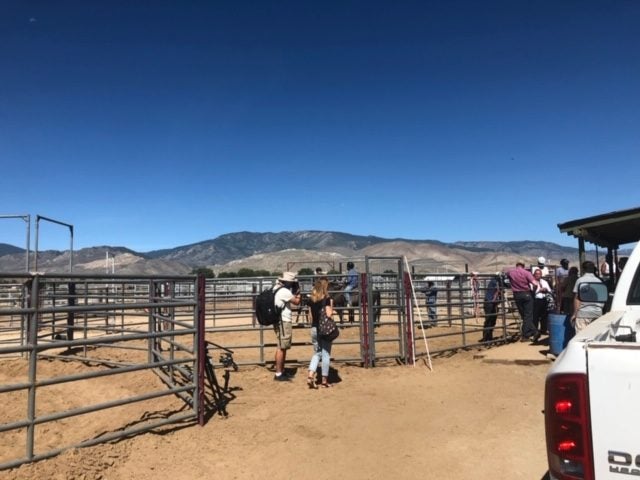
Like the other inmates Curry selects for the program, Jones had a record of good behavior and had shown himself to be calm, patient and level-headed throughout the application and interview process. Plus, he wanted to work. Most of the inmates do — just not with Curry. When given a choice of work program, the vast majority would rather fight fires or paint buildings downtown than spend the day braving the fury of an untamed, 1,100-pound animal happy to crush or stampede them if provoked. So, out of the 200 inmates living on the premises, only about 12 to 15 sign up. “Most guys are afraid,” Curry chuckles. “Guess they’re not so tough.”
If they’re willing to brave it, they have their work cut out for them. Six days a week save for Sunday, Curry has them up at the crack of dawn to feed, water and groom their horses, which he assigns to them based on experience (new guys get the more docile mustangs, while more experienced trainers are gifted with the wilier ones). After their horses are taken care of, so must be their shit: much of this job is shoveling manure, an esteemed responsibility given to trainers no matter how prodigious they are. When that’s done, inmates are also required to fix broken fences, cut hay and perform whatever other items of maintenance the ranch requires. Afterwards, mercifully, it’s training time. Inmates work with their horses for hours each day, building up from the crucial, trust-building first touch to the final weeks when they learn to be ridden (or surfed on, if that’s your thing).
The whole process takes about four months, but the transformation from wild to mild is rarely a seamless — or bloodless — one. One inmate named Juan tells me it took over two weeks of fruitlessly chasing his horse Gator around a pen just to put a halter on him, and his companion Austin says his mustang tried to buck him off three times just yesterday (that’s common, as are cuts, bruises and broken bones). “He looked back at me like, ‘You’re still here?’” says Austin. “He was getting real emotional, and so was I, but rather than kick him or argue with him, I decided to cut my day short. It’s like any relationship: There are just times where you push each other’s buttons and you have to work your way back up from square one.”
It’s within those frustrating, often dangerous moments that real changes start to occur in both mustang and trainer. Three years ago when Mark first started in the program, he spent a demoralizing week trying to get one of his first horses, a golden palomino named Midas, to run in a circle within the training pen, something Midas had already learned to do. Every time Midas looked like he was about to do it, he’d stop, rear up or cut across the center of the ring, narrowly missing Mark, who’d have to jump out of his way. “I was so frustrated,” he remembers. “I thought him and I were past this. I thought he was better than this. All I wanted to do at that point was give up.”
But after storming out of the ring to blow off steam and getting a talking to from Curry, Mark realized something: He wasn’t going to get anywhere with Midas if he didn’t calm down himself. “He was just reflecting my own behavior and attitude back at me,” he says. “You get so close to these horses — and you’re who they’re learning from — that oftentimes they become a mirror of you. They reflect back what you put out. When I started to see myself how he saw me, I felt like I had to change. I didn’t want him to feel anxious or afraid like I did. I wanted him to be calm and trusting so I could get him through training. So that’s what I had to become. I’m gentler now. I’m more patient. It’s funny, we come here to break horses, but sometimes, it feels like they’re the ones breaking you.”
Mark is getting out next week. He’s been locked up seven years on drug charges, and he’s looking forward to using what he’s learned toward being a better father to his 10-year-old son. “This is going to help me with my parenting skills, because it’s taught me so much about how to take things one step at a time,” he says. “I’m so much more patient now. I’m a much gentler person. I look at this incarceration, and it’s been such a blessing. It’s going to help me every day for the rest of my life.”
Back on the ranch, the sun has started to cast long shadows as it makes its way down from its perch at the highest point of the blazing azure expanse. As I watch them creep slowly across the ground, I think back to something Jones said earlier when I asked him whether he felt closer to the horses he trains than some of the humans in his life. “Much closer,” he said. “It’s like we’re one.” Looking at the bizarre, two-headed organism his and Conan’s combined shadow makes as it’s cast across the sand below, it certainly seems that way.
I ask him if he thinks he’ll keep riding when he gets out, but he shakes his head no. He’s going back to the oilfields to work, and knows he won’t have the time, money or land to give a horse as good a life as he can here. He’s okay with that, though. He’s planning on using what he’s learned from Conan, Curry and the rest of the program to care for someone he never has before: himself.
“The fact that this wild horse, this crazy animal who’s never even seen a person before, has let me put my hands on him, catch him with a halter and hug his neck is just amazing to me,” he says. “He wouldn’t let me get nowhere close to him in the beginning, like he could tell I was bad or something. But after a week or so, he realized I wasn’t going to hurt him and he started to trust me. That was just the most incredible feeling. For someone who’s broken so much trust and made so many mistakes, I can’t tell you how much it means to be trusted. There hasn’t been much love in my life — and there definitely ain’t no love in prison — but this horse taught me how to love again.”
Jones says he’ll cry when Conan goes to auction. He almost tears up in front of me thinking about it, shaking his head in disbelief at the prospect of giving up his friend. It’s possible Conan will go to the NYPD, but Jones hopes he goes to a nice family instead. Maybe near Yosemite, where it’s beautiful and he’ll have space to run and they’ll love him just like they love their dogs and their family. “I love this horse and he loves me,” Jones says. “It’s so bittersweet. I didn’t know I could feel emotions like this, but knowing that I can, and that I’ve learned so many things about myself, well, it gives me hope.”
